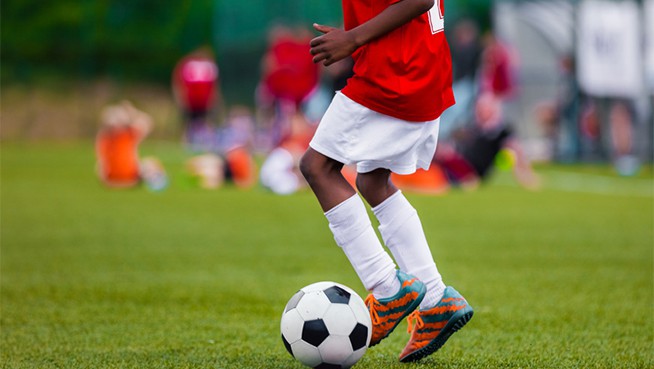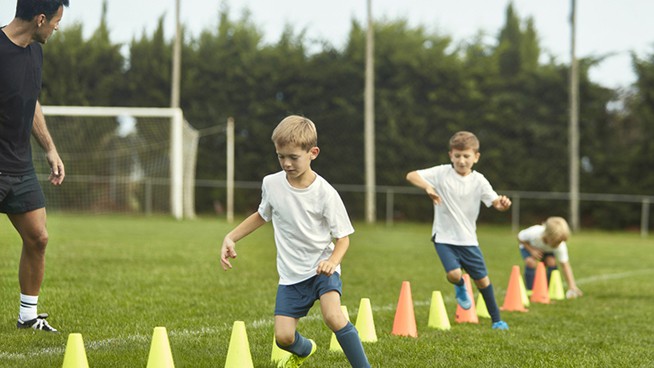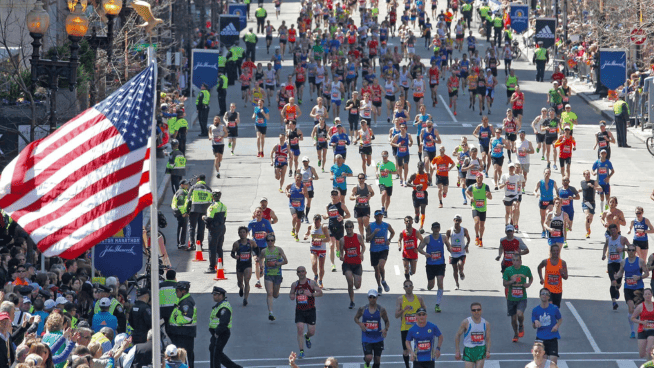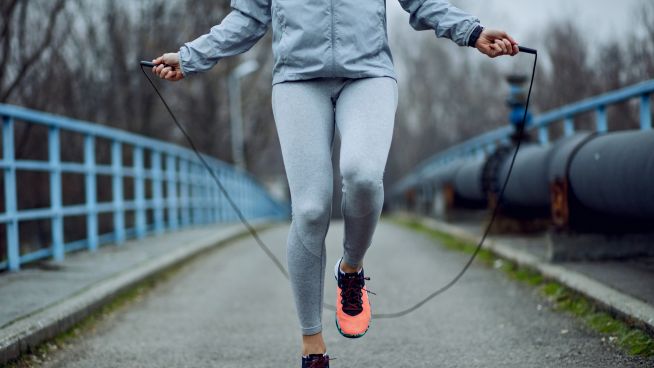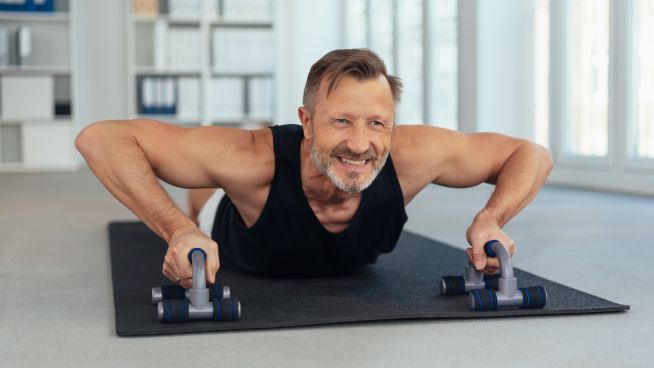Soccer Summer Training Guide 2013
STACK’s Soccer Summer Training Guide was developed by Kevin Miller, CSCS, fitness coach for the Philadelphia Union and owner of CoachKevTraining.com.
I’ve worked in sports performance for the last 10 years. I was at a general gym, then had the opportunity to work with some Philadelphia Union players when they came to town.
I’m constantly reading books and going to seminars. I always want to know the latest information and techniques to help athletes get better.
The number one thing soccer players should try to improve during the summer is their conditioning.
This program will improve your endurance, decrease your recovery time, reduce your chance of injury and improve your overall fitness. You will be able to run faster for longer periods of time, and even train harder.
Too many high school soccer players worry about numbers.
I never recommend an athlete chase after a number, whether it’s a bench max or a mile PR. Either one can cause bad technique and lead to injury.
The only number you really want to be concerned with is your heart rate. Wear a heart-rate monitor during these workouts to measure how fast your heart rate recovers, which indicates how fit you are. Your goal should be to drop from 150 to 120 beats per minute in under one minute.
You don’t want to max out your heart rate. The goal is to keep within the prescribed range during each workout.
Combine this program with strength work on Monday, Tuesday and Thursday.
Do your speed work at the beginning of your workout. Then hit the weights before finishing with your conditioning work.
You can accomplish a lot in the weight room in 30 minutes. Do four or five exercises each day, and try to progress the weight regularly but gradually.
Lower the workout intensity every fourth week. Take this time to recover and come back reenergized the next week.
You have to listen to your body.
No one program is perfect for everybody. If you’re feeling sluggish or fatigued, do a light 30-minute aerobic workout for some active recovery. If you feel energized and ready, then get after it.
Surround yourself with good training partners. Follow the program and challenge each other to get better.
You need to get a heart-rate baseline so you can track your progress. Go for a one-mile run and log your average heart rate. After four weeks of training, test yourself again. You may run a bit faster and your heart rate may be a few beats lower, indicating that your endurance is improving—and you’re running more efficiently.
Take five minutes to focus on your breathing after a workout. Lie on your back with your knees bent and your left hand on your stomach. As you inhale through your nose, your stomach and sides should expand. Exhale through your mouth, and push all of the air out of your lungs. Focus on breathing with your diaphragm, not with your chest. Pause for one second and take another breath. This allows your body to transition from an active to a recovery state, helping your body start the rebuilding process.
The First Week
Monday
- Box Jumps – 3×5 (30 sec. rest)
- Med Ball Crow Hop Throws – 2×10 (30 sec. rest)
- Prime Timers – 5×15 yards (walk back to start for rest)
- Falling Starts – 5×15 yards (walk back to start for rest)
- Hill Sprints – 10×15 sec. (walk back to start for rest)
Tuesday
- Fast Jog – 2×5 min.
- Jump Rope – 2×5 min.
- Sled Push – 2×5 min. (3 min. rest)
Thursday
- Skater Hops – 2×3 each side (15 sec. rest)
- Med Ball Hip Hinge and Reach – 2×5 each side
- Mini-Band Lateral Deceleration – 2×10 each direction (15 sec. rest)
- Shuffle-to-Sprint – 4×5 yards + 15 yards each direction (75 sec. rest)
- Backpedal-to-Sprint – 5×5 yards + 15 yards (75 sec.)
Saturday
- 18-to-18 Sprints – 1×6 (45 sec. rest)
- Tempo Runs on Grass – 1×20 min.
Exercise Instructions
Skater Hops w/ Bounce & Stick
Hop straight up after your foot makes contact with the ground, and then stick the landing. Repeat in the opposite direction.
Med Ball Hip Hinge and Reach
Stand on one leg and hold a med ball with your arms extended in front of your chest. Hinge at your hip until your body is parallel to the ground, and reach forwards as far as possible with your arms. Keep your body and rear leg in a straight line. Extend your hip to return to the start position.
Mini-Band Knees Lateral Deceleration
Place a mini band around your thighs, slightly above your knees. Stand with your feet hip width apart and slightly bend your knees and hips. Take a two-foot lateral step with your right foot without moving your left foot. Keep your upper body balance and stable. Step your right foot back to the starting stance.
Lateral Shuffle to Sprint
Shuffle to the side for five yards, turn and sprint forwards for 15 yards.
Backpedal to Sprint
Backpedal for five yards, turn 180 degrees and sprint forwards for 15 yards
18-to-18 Runs
Sprint from the 18-yard box (i.e., penalty area) to the opposite 18-yard box.
Box Jumps (Single-Leg Landing)
Perform a Box Jump, landing with one foot on the box.
Medicine Ball Broad Jump and Throw
Perform a Broad Jump and simultaneously throw a med ball forwards as forcefully as possible.
Linear Bounding to Sprint
Bound for three steps, and then transition into a sprint for 15 yards.
Resisted Lateral Shuffle
Place a resistance band around your thighs, slightly above your knees. Perform Lateral Shuffles.
Photo: AP
RECOMMENDED FOR YOU
MOST POPULAR
Soccer Summer Training Guide 2013
STACK’s Soccer Summer Training Guide was developed by Kevin Miller, CSCS, fitness coach for the Philadelphia Union and owner of CoachKevTraining.com.
I’ve worked in sports performance for the last 10 years. I was at a general gym, then had the opportunity to work with some Philadelphia Union players when they came to town.
I’m constantly reading books and going to seminars. I always want to know the latest information and techniques to help athletes get better.
The number one thing soccer players should try to improve during the summer is their conditioning.
This program will improve your endurance, decrease your recovery time, reduce your chance of injury and improve your overall fitness. You will be able to run faster for longer periods of time, and even train harder.
Too many high school soccer players worry about numbers.
I never recommend an athlete chase after a number, whether it’s a bench max or a mile PR. Either one can cause bad technique and lead to injury.
The only number you really want to be concerned with is your heart rate. Wear a heart-rate monitor during these workouts to measure how fast your heart rate recovers, which indicates how fit you are. Your goal should be to drop from 150 to 120 beats per minute in under one minute.
You don’t want to max out your heart rate. The goal is to keep within the prescribed range during each workout.
Combine this program with strength work on Monday, Tuesday and Thursday.
Do your speed work at the beginning of your workout. Then hit the weights before finishing with your conditioning work.
You can accomplish a lot in the weight room in 30 minutes. Do four or five exercises each day, and try to progress the weight regularly but gradually.
Lower the workout intensity every fourth week. Take this time to recover and come back reenergized the next week.
You have to listen to your body.
No one program is perfect for everybody. If you’re feeling sluggish or fatigued, do a light 30-minute aerobic workout for some active recovery. If you feel energized and ready, then get after it.
Surround yourself with good training partners. Follow the program and challenge each other to get better.
You need to get a heart-rate baseline so you can track your progress. Go for a one-mile run and log your average heart rate. After four weeks of training, test yourself again. You may run a bit faster and your heart rate may be a few beats lower, indicating that your endurance is improving—and you’re running more efficiently.
Take five minutes to focus on your breathing after a workout. Lie on your back with your knees bent and your left hand on your stomach. As you inhale through your nose, your stomach and sides should expand. Exhale through your mouth, and push all of the air out of your lungs. Focus on breathing with your diaphragm, not with your chest. Pause for one second and take another breath. This allows your body to transition from an active to a recovery state, helping your body start the rebuilding process.
The First Week
Monday
- Box Jumps – 3×5 (30 sec. rest)
- Med Ball Crow Hop Throws – 2×10 (30 sec. rest)
- Prime Timers – 5×15 yards (walk back to start for rest)
- Falling Starts – 5×15 yards (walk back to start for rest)
- Hill Sprints – 10×15 sec. (walk back to start for rest)
Tuesday
- Fast Jog – 2×5 min.
- Jump Rope – 2×5 min.
- Sled Push – 2×5 min. (3 min. rest)
Thursday
- Skater Hops – 2×3 each side (15 sec. rest)
- Med Ball Hip Hinge and Reach – 2×5 each side
- Mini-Band Lateral Deceleration – 2×10 each direction (15 sec. rest)
- Shuffle-to-Sprint – 4×5 yards + 15 yards each direction (75 sec. rest)
- Backpedal-to-Sprint – 5×5 yards + 15 yards (75 sec.)
Saturday
- 18-to-18 Sprints – 1×6 (45 sec. rest)
- Tempo Runs on Grass – 1×20 min.
Exercise Instructions
Skater Hops w/ Bounce & Stick
Hop straight up after your foot makes contact with the ground, and then stick the landing. Repeat in the opposite direction.
Med Ball Hip Hinge and Reach
Stand on one leg and hold a med ball with your arms extended in front of your chest. Hinge at your hip until your body is parallel to the ground, and reach forwards as far as possible with your arms. Keep your body and rear leg in a straight line. Extend your hip to return to the start position.
Mini-Band Knees Lateral Deceleration
Place a mini band around your thighs, slightly above your knees. Stand with your feet hip width apart and slightly bend your knees and hips. Take a two-foot lateral step with your right foot without moving your left foot. Keep your upper body balance and stable. Step your right foot back to the starting stance.
Lateral Shuffle to Sprint
Shuffle to the side for five yards, turn and sprint forwards for 15 yards.
Backpedal to Sprint
Backpedal for five yards, turn 180 degrees and sprint forwards for 15 yards
18-to-18 Runs
Sprint from the 18-yard box (i.e., penalty area) to the opposite 18-yard box.
Box Jumps (Single-Leg Landing)
Perform a Box Jump, landing with one foot on the box.
Medicine Ball Broad Jump and Throw
Perform a Broad Jump and simultaneously throw a med ball forwards as forcefully as possible.
Linear Bounding to Sprint
Bound for three steps, and then transition into a sprint for 15 yards.
Resisted Lateral Shuffle
Place a resistance band around your thighs, slightly above your knees. Perform Lateral Shuffles.
Photo: AP





